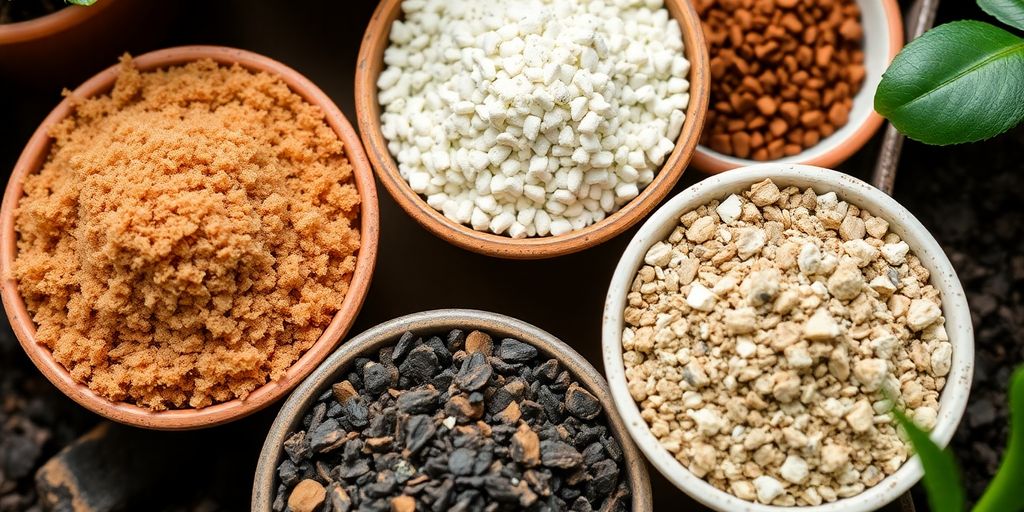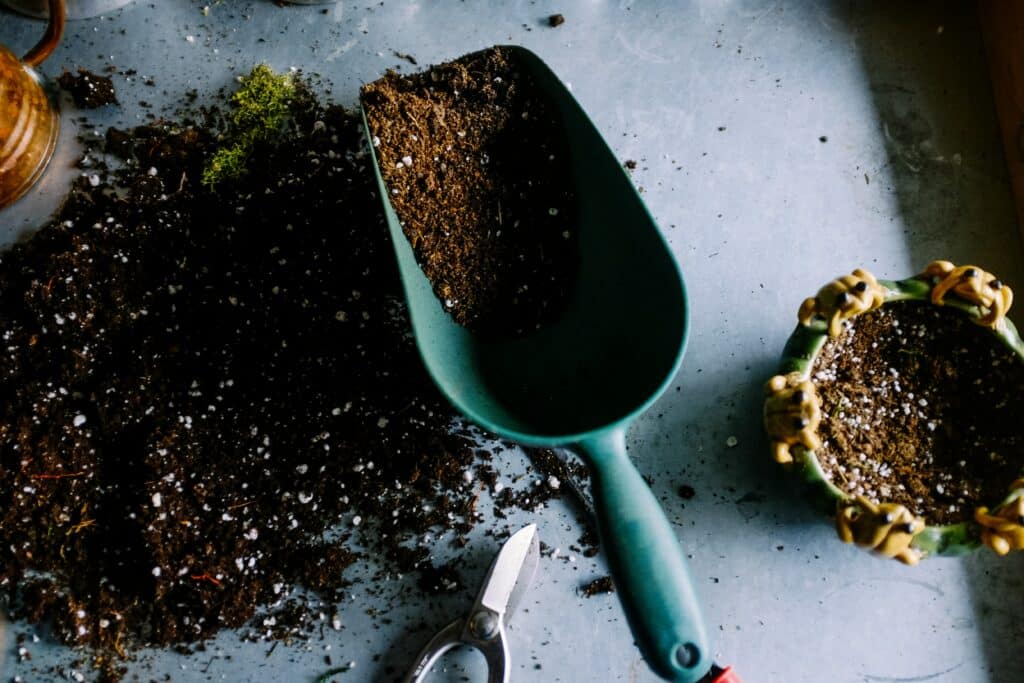What is potting mix and which type is best for houseplants is a common question among plant lovers, especially with so many options on the market. The right mix can make all the difference in helping your plants thrive. But choosing one isn’t always straightforward.
Potting mix isn’t just soil—it’s a carefully balanced blend designed to support root health, drainage, and growth. Each ingredient plays a specific role. And in 2025, there are even more eco-friendly and specialized blends to consider.
Whether you’re growing succulents, ferns, or flowering plants, not all mixes are created equal. Understanding your plant’s needs is key to finding the perfect match. A tailored mix can boost growth and reduce common problems.
Ready to take the guesswork out of soil shopping? This guide will walk you through what makes a good potting mix and how to choose the best one for your houseplants this year. Let’s dig in!
Key takeaways
- Potting mix is essential for healthy plant growth, providing nutrients and proper drainage.
- Different plants require different potting mixes; tropical plants need moisture-retaining soil, while succulents prefer well-draining mixes.
- Regularly check and maintain your potting mix to ensure it stays healthy and supports your plants’ needs.
Understanding potting mix components

Key ingredients for healthy plants
Okay, so you wanna get down to the nitty-gritty of what’s actually in that bag of potting mix? It’s not just dirt, that’s for sure. Good potting mix is a carefully balanced blend of ingredients that give your plants the best shot at thriving. The right mix provides support, drainage, aeration, and nutrients.
Here’s a rundown of some common players:
- Peat Moss: This stuff is like a sponge, holding onto moisture and releasing it slowly. It’s also slightly acidic, which some plants love. However, it’s not the most sustainable option, so…
- Coconut Coir: Think of this as peat moss’s eco-friendly cousin. Made from coconut husks, it does pretty much the same job but is way more sustainable. Plus, it’s easier to re-wet if it dries out completely, which is a lifesaver if you’re a forgetful waterer like me.
- Perlite: Those little white pebbles? That’s perlite. It’s volcanic glass that’s been heated until it pops, creating a lightweight material that improves drainage and aeration. Basically, it stops your soil from becoming a soggy mess.
- Vermiculite: Similar to perlite, but it holds onto more moisture and nutrients. It’s a good addition if you have plants that like to stay consistently moist.
- Bark or Wood Chips: You’ll often find these in mixes for orchids and other plants that need excellent drainage and air circulation around their roots. They also add some bulk to the mix.
The role of organic and mineral materials
So, what’s the deal with organic versus mineral stuff in potting mix? Well, organic materials (like peat moss, coir, compost, and aged manure) decompose over time, releasing nutrients into the soil and improving its structure. Mineral materials (like perlite, vermiculite, and sand) don’t break down, but they play a crucial role in drainage and aeration.
Think of it this way: organic stuff feeds your plants and improves the soil in the long run, while mineral stuff provides the physical structure that allows roots to breathe and prevents waterlogging. A good potting mix needs both to keep your plants happy and healthy. I’ve found that a mix of both works best, kinda like having a balanced diet for your plants, ya know?
Selecting the right potting mix for houseplants

Okay, so you’ve got your plants, and now it’s time to get serious about their soil. Choosing the right potting mix is super important – it’s like picking the right food for them. I’ve seen plants just thrive when they’re in the right mix, and totally struggle when they’re not. It really makes a difference, y’all.
Mixes for tropical plants
Tropical plants, like my beloved Monstera, need a mix that drains well but still holds some moisture. A good starting point is a mix with perlite, peat moss, and some bark. I usually add extra perlite because I tend to overwater (oops!). You can buy pre-made mixes specifically for aroids (like pothos and philodendrons), which is super convenient. These mixes often include:
- Perlite: For aeration and drainage.
- Peat moss or coco coir: To retain moisture.
- Bark: For added drainage and structure.
Soils for succulents and cacti
Now, succulents and cacti are a whole different ball game. They hate sitting in wet soil. I learned that the hard way when I first started with succulents – RIP little guys.
The key is a fast-draining mix that doesn’t hold a lot of water. Look for mixes specifically made for cacti and succulents, or make your own. A good mix might include:
- Sand: For drainage.
- Perlite or pumice: To improve aeration.
- A small amount of potting soil: For nutrients.
I sometimes add a little bit of crushed gravel to my succulent mix for even better drainage. Just be careful not to overwater – these guys prefer to be dry!
Best practices for using potting mix
How to prepare your potting mix
Alright, so you’ve got your potting mix – awesome! But before you just dump it in a pot, there are a couple of things I’ve learned that can really make a difference. First off, I like to moisten the mix before planting. Not soaking wet, just damp enough so it’s not hydrophobic.
I usually do this in a big tub, mixing in water until it clumps together a bit when squeezed. This helps avoid that initial shock when you water your newly planted plant, and the water just runs straight through. Also, if you’re using a mix that’s been sitting around for a while, fluffing it up can help aerate it. Think of it like waking it up, you know?
Tips for maintaining soil health
Maintaining soil health is super important for happy plants. Here’s what I’ve found works best:
- Watering Right: Overwatering is a killer. Make sure your pot has good drainage, and let the top inch or two of soil dry out before watering again. I usually stick my finger in the soil to check. If it feels moist, I wait. Simple as that.
- Feeding Time: Potting mix usually has some nutrients, but they don’t last forever. I like to use a balanced liquid fertilizer every few weeks during the growing season. It’s like giving your plants a vitamin boost. I’ve burned my plants before by over-fertilizing, so always follow the instructions on the label, okay?
- Repotting When Needed: Plants outgrow their pots, and the soil gets depleted. Repotting with fresh potting mix every year or two gives them a fresh start. Plus, you get to check out the roots and make sure everything looks healthy down there. I usually go up a pot size or two when I repot. It’s like moving to a bigger apartment, you know, more room to stretch out.
Wrapping it up
Choosing the right potting mix is key to keeping your houseplants happy and thriving. Whether you go for a store-bought option like FoxFarm Ocean Forest or whip up your own blend with perlite and bark, the right soil makes a big difference.
Remember, each plant has its own needs, so take a moment to consider what works best for yours. Have fun experimenting and watching your plants grow! If you found this guide helpful, feel free to share your favorite potting mixes or follow us on Instagram for more plant tips and inspiration!
Frequently asked questions
What is potting mix made of?
Potting mix usually contains a mix of peat moss, coconut coir, perlite, and vermiculite. These ingredients help hold moisture and provide good drainage for the roots.
How do I choose the right potting mix for my houseplants?
To pick the right potting mix, think about what type of plant you have. Tropical plants like a mix that holds moisture, while succulents prefer a mix that drains quickly.
Can I make my own potting mix?
Yes! You can create your own potting mix by combining ingredients like peat moss, perlite, and bark. This way, you can adjust it to fit your specific plants’ needs.
